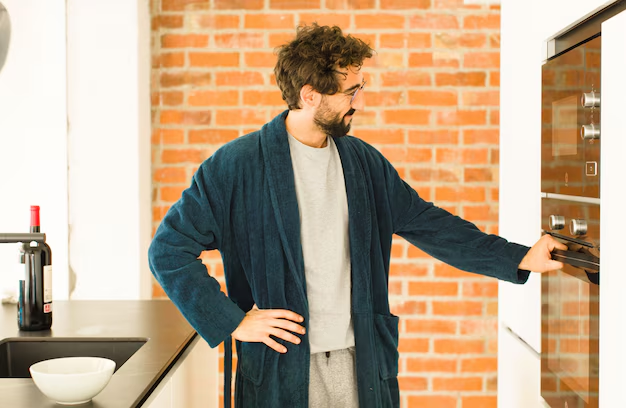How to Safely and Effectively Unplug Your Refrigerator
Have you ever wondered how or why you should unplug your refrigerator? Maybe you're remodeling your kitchen, going on a long vacation, or simply performing routine maintenance. Whatever the reason, unplugging your refrigerator may seem like a straightforward task, but doing it correctly and safely is crucial. This guide will walk you through the process from start to finish and provide valuable insights into when and why you might need to unplug your fridge.
Why Unplugging Your Refrigerator Matters
Unplugging your refrigerator isn’t just about pulling the plug. It requires thought and preparation to ensure your appliance remains in good condition and your home stays safe. Whether you're conducting repairs, cleaning the appliance, or moving it, understanding the right way to unplug is important for several practical reasons.
When Should You Unplug Your Refrigerator?
1. During Cleaning:
To clean thoroughly, it's often necessary to unplug the unit to avoid electrical hazards.
2. For Maintenance:
Routine check-ups or repairs by professionals often require the appliance to be powered down.
3. Long Trips:
If you're going on vacation for an extended period, unplugging can save energy and prevent energy waste. Make sure you empty it first!
4. Moving:
When moving the refrigerator, whether it’s across the room or across town, unplugging is a prerequisite for safe transportation.
5. Energy Conservation:
Infrequently using a secondary refrigerator? Consider unplugging it to save energy.
Step-by-Step Guide to Unplugging Your Refrigerator
Preparation Before Unplugging
Before you unplug your refrigerator, follow these preparatory steps to ensure a smooth process:
**1. Ensure Food Safety:
Remove all perishable items and store them in another refrigerator or coolers with ice packs during the process.
**2. Defrost if Necessary:
If your refrigerator is older or doesn’t have an automatic defrost feature, consider defrosting to prevent water leakage.
**3. Gather Supplies:
Have towels and a mop handy to manage any water spills, especially if defrosting.
How to Unplug Your Refrigerator
**1. Locate the Power Plug
The power cord for most refrigerators is located at the back. Carefully pull the unit out to access it if needed.
**2. Switch Off Power Supply
It's a good idea to turn off the power supply at the circuit breaker if possible, especially if the outlet is hard to reach.
**3. Unplug the Cord
Gently pull the plug from the outlet. Make sure not to yank to prevent damage to the plug or outlet.
**4. Secure the Cord
Once unplugged, secure the cord using a clip or twist tie to prevent it from being caught.
After Unplugging: What’s Next?
**1. Clean Interior and Exterior
Wipe down surfaces to prevent mildew or odor buildup.
**2. Leave Doors Open
To discourage mold growth, leave the refrigerator and freezer doors slightly ajar.
**3. Shut Water Valves
If your refrigerator has an ice maker or water dispenser, turn off the water supply to prevent leaks.
Unplugged Refrigerator & Maintenance Tips
Regular Maintenance is key to ensuring the longevity of your refrigerator. Here's what you can do while it's unplugged:
Clean Coils:
Using a vacuum or brush, clean the condenser coils at the back or beneath to maximize efficiency.Check Seals:
Inspect the door seals for any signs of wear or damage. A poor seal means energy loss.Inspect Filters:
If applicable, check filters for ice makers and water dispensers and replace if necessary.Monitor Temperature Upon Re-plugging:
After powering back, check that temperatures return to normal ranges for optimum food preservation.
Common Questions About Unplugging Refrigerators
**1. **Does frequently unplugging harm the refrigerator?
Frequent unplugging can strain compressors over time, leading to potential malfunctions. Limit unplugging to necessary scenarios.
**2. **How long should you wait before re-plugging?
After unplugging, wait 3-5 minutes before re-plugging to allow internal pressure to equalize.
**3. **What if my refrigerator makes sounds after re-plugging?
Some sound is normal as the compressor restarts. If noises persist beyond normal hums, consult a technician.
Safety Tips When Unplugging Your Refrigerator
Avoid Water:
Ensure the floor and your hands are dry to prevent electric shock.Use Proper Technique
Always pull the plug, not the cord, to avoid damaging connections.Mind the Weight
Refrigerators are heavy; take care when moving to prevent injuries.
Summary of Key Steps and Tips
Here’s a quick overview of the main considerations for safely unplugging your refrigerator:
🔌 Prepare Thoroughly
- Remove perishables
- Defrost if necessary
- Gather cleaning supplies
🛡️ Safety First
- Ensure dry conditions
- Pull the plug, not the cord
🌿 Post-Unplug
- Clean interior and exterior
- Leave doors open for ventilation
🔄 Regular Check-Ups
- Clean condenser coils
- Inspect seals and filters
Remember, unplugging a refrigerator might not be as simple as it appears, but following these steps ensures that the process is smooth and safe both for you and this essential household appliance. By keeping these guidelines at your fingertips, you'll be prepared for maintenance, cleaning, and moving scenarios while safeguarding your investment.
Finally, keep in mind that while unplugging is an essential part of kitchen management, it should be done mindfully to maintain the appliance in the best possible condition.
